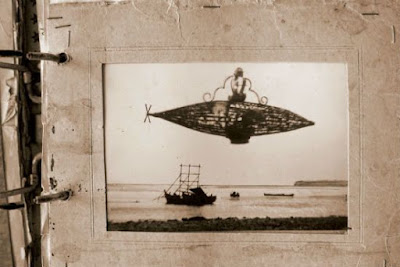1. B. Swami Vivekananda
(The
Main Building of IISc)
The Indian Institute of Science was conceptualised during a
chance conversation between Swami Vivekananda and Jamsetji Nusserwanji Tata
aboard a cruise-liner headed to Chicago from Japan in September, 1893 where he
discussed his idea of starting a research university. The encounter was later
recounted in a letter Tata wrote to Vivekananda in November 1898. In 1898, Tata
offered to endow his property to contribute towards the expenses of the
proposed university. In December 1898, a delegation led by Tata met the new
Viceroy of India Lord Curzon to discuss the to the idea of setting up the
proposed university which the Government in principle agreed. By then, the
Dewan of Mysore State Seshadri Iyer offered land and additional Rs. 5 Lakh on behalf of the Regent Queen Vani
Vilasa Sannidhana, who ruled the State on behalf of her son Krishnarajendra
Wadiyar, then still a minor. Tata unfortunately died in May 1904 well before
IISc was formally established on 27 May 1909. After the Government finally passed
on a vesting order.
Morris William Travers was an English chemist who worked with
Sir William Ramsay in the discovery of xenon, neon and krypton, the founding
director of the Indian Institute of Science. It was granted the Deemed to be University
status in 1958 and the Institute of Eminence status in 2018.
2.
C. Himadri
(Major Research Stations in the Arctic)
"Himadri" is India's first
permanent Arctic research station located at Spitsbergen, Svalbard, Norway inaugurated
on the 1st of July, 2008. It is located at the International Arctic Research
base, Ny-Ålesund. It was set up during India's second Arctic expedition in June
2008. It is located at a distance of 1,200 kilometres from the North Pole. India
is the 11th country after Britain, Germany, France, Italy, China, Japan, South
Korea, The Netherlands, Sweden and Norway to set up a permanent research
station in Ny-Ålesund, Norway.
3. A. Tessy Thomas
Tessy Thomas (born April 1963 in Alappuzha,
Kerala to a Syrian Christian family) is an Indian scientist and Director
General of Aeronautical Systems and the former Project Director for Agni-IV and
Agni-V missile in "Defence Research and Development Organization". She is the
first woman scientist to head a missile project in India. She is known as the
'Missile Woman' of India.
Tessy was the Associate Project Director
of the 3,000 km range Agni-III missile project. She was the Project Director
for mission Agni IV (earlier known as "Agni II Prime") which was
successfully tested in 2011. Tessy was appointed as the Project Director for
5,000 km range Agni-V (an upgraded version of the Agni III) in 2009 which was
successfully tested on 19 April 2012. She was appointed as Director-General,
Aeronautical Systems of DRDO in 2018.
4. A. Shivkar Bapuji Talpade
(Pratap
Velkar's image of what Talpade's aircraft might have looked like, as seen in
his book on the inventor)
Shivkar Bāpuji Talpade (1864 – 1916) was
an Indian scholar who is said to have constructed the first unmanned airplane
in 1895. Talpade lived in Mumbai and was a great Sanskrit scholar who had great
command over the Vedas and Shastras. He constructed this airplane with the help
of “Vimana Shashtra” by Maharishi Bharadwaj. Bapuji Talpade along with his wife
designed the Aeroplane and named it "Marutsakha" (Friend of wind) which
was flown in 1895 in Choupati beach in Bombay. The airplane was flown in front
of thousands of people and it went 1500 ft. high. The most amazing thing about
this plane was that there was no pilot in the plane and it was a
remote-controlled plane.
However, the whole invention is still
shrouded in mystery and today very little evidence is there to prove whether
Talpade was successful or not in creating a flying machine.
(A still from the film "Hawaizaada")
A film based on life of Talpade,
Hawaizaada, starring Ayushmann Khurrana, was released on 30 January 2015.
5. B. Indian Statistical Institute,
Calcutta
Even though the world got introduced to
the computer technology in late forties, India bought its first computer in
1956 for a princely sum of Rs 10 lakh. It was called "HEC-2M" ("Hollerith
Electronic Computer - 2M" crafted and designed by Professor AD Booth at
Birk Bak College in the UK) and was installed "Indian Statistical
Institute" at Calcutta. The machine had a memory of 1024 (24 bit words)
and arrived at the ISI without any manuals. Prof MM Mukherjee and Amaresh Roy,
two young people selected by Prof P.C. Mahalanobis, founder of ISI were sent to
get trained by Prof Booth himself in installing and managing the equipment.
(Inauguration of TIFRAC by PM Jawaharlal Nehru in 1960)
But a truly Indian-made computer was
made by Professor R. Narasimhan at the Tata Institute of Fundamental Research
(TIFR) Bombay, when he put together a pilot computer to design logic circuits
in 1956. This was later expanded to produce the "TIFR Automatic Calculator" or
TIFRAC, inaugurated by Jawaharlal Nehru.


















No comments:
Post a Comment